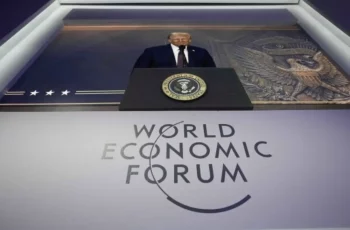
The recent visit of Chinese Foreign Minister Wang Yi to Moscow, culminating in a high-profile meeting with President Vladimir Putin, is more than a symbolic gesture of deepening Sino-Russian ties. It marks a broader realignment—or perhaps the illusion of one—within the international system, where the United States appears increasingly unable to simultaneously confront Iran, Russia, and China. Instead, Washington seems to be choosing its battles, recalibrating its priorities in a world where strategic overload is no longer sustainable.
A close reading of U.S. foreign policy behavior in recent months suggests a deliberate shift. While the Trump administration publicly reaffirms its commitment to Ukraine, behind closed doors, a softening stance toward Moscow is palpable. The language has grown less confrontational. There are whispers—backed by diplomatic overtures—that Washington may be seeking a geopolitical de-escalation with Russia, potentially accepting a “frozen conflict” in Ukraine, as long as it allows the U.S. to divert resources and attention toward its primary strategic competitor: China.
Unlike Russia, China poses a systemic, long-term threat to U.S. global primacy—not only in military or diplomatic terms, but also economically and technologically. From export controls on advanced semiconductors to restrictions on Huawei and TikTok, Washington’s posture toward Beijing remains confrontational and enduring. This rivalry is not a matter of short-term tactical disagreement but a structural clash of hegemonic visions. China’s recent coordination with Moscow, especially through forums like BRICS+ and the Shanghai Cooperation Organization, only reinforces Washington’s anxiety over the consolidation of an Eastern strategic bloc.
Amid this reshuffling of great-power dynamics, Iran occupies a distinct and immovable position. As I argued in a previous article, the conflict between Iran and the United States is not merely about sanctions or centrifuges—it is philosophical and civilizational in nature. While the U.S. may be flexible with Moscow and calculating with Beijing, its posture toward Iran remains rigid and absolutist. The American strategic imagination cannot accommodate a sovereign, ideologically self-defined Iran that resists assimilation into the Western liberal order. That is why, despite multiple mediation efforts—including by Russia—no durable agreement has been reached. The impasse is not diplomatic; it is metaphysical.
In this context, the U.S. appears to be offering selective concessions. It is testing the idea that by neutralizing the “manageable adversary” (Russia), it can concentrate its energies on the “strategic peer competitor” (China), while continuing to contain the “irreconcilable enemy” (Iran). Yet this triage-like strategy underestimates the level of convergence between Moscow, Beijing, and Tehran. The idea that Russia can be peeled away from China or that Iran can be isolated from both is a relic of a bygone unipolar logic.
Wang Yi’s visit to Moscow sends a different message: that the architecture of Eurasian resistance is hardening, not fragmenting. And the West, if it continues to misread this geopolitical symphony, may soon find itself responding to a world no longer composed in its own key.










Comments